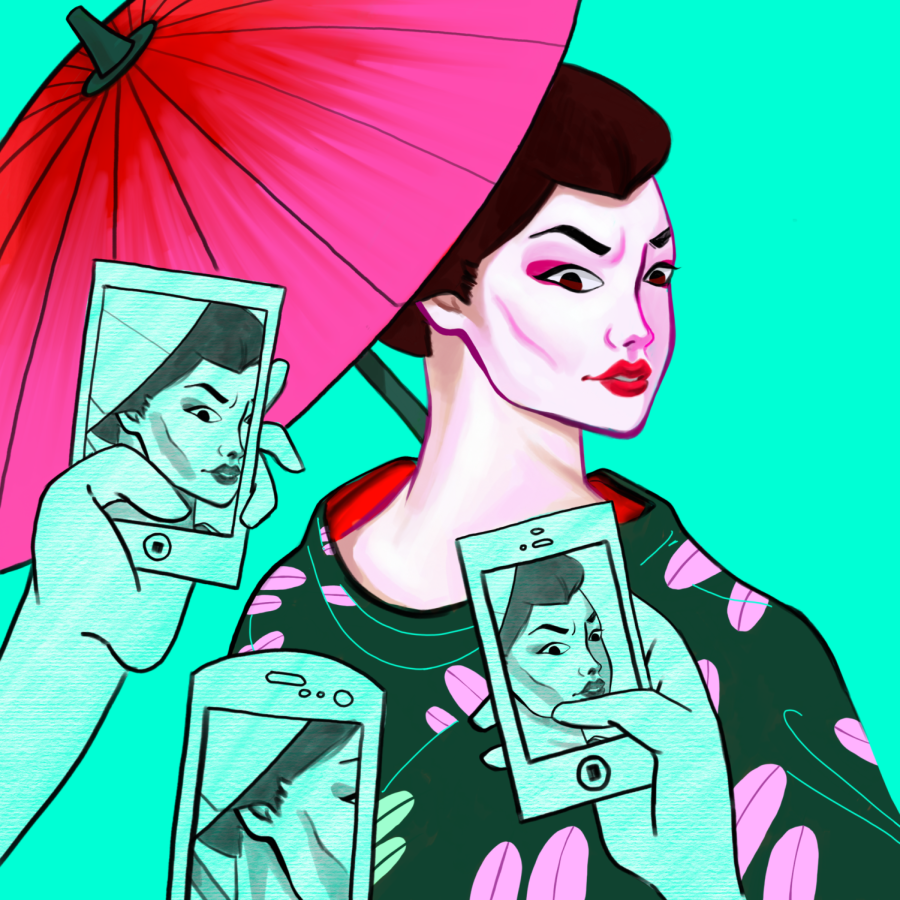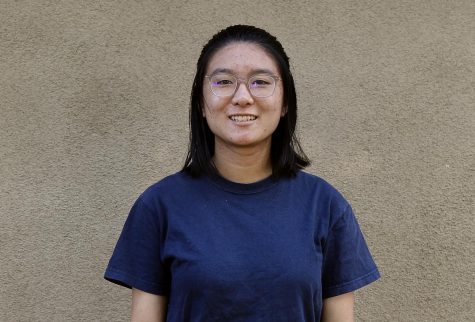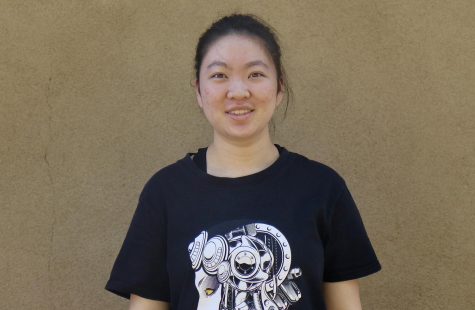Stop fetishizing Asian women
From legislation to dating preferences and media portrayals, Asian women have been stereotyped and objectified in what is known as the Asian Fetish. (Graphic Illustration by Christy Yu.)
May 23, 2021
Asian women are often forced into a caricature as either docile or sexually alluring, dutiful or domineering, the “wilting flower” or the “dragon lady,” caught between two contradictory labels imposed by men’s sexual fantasies and normalized through portrayals in film, television, plays and public policy. In the case of the Atlanta shooting on March 16, where six of the eight victims were Asian women, they were murdered because of these stereotypes. The shooter denied that he committed a hate crime and said that he was motivated by his “sex addiction,” but that excuse is rooted in the historic racist and sexist stereotypes imposed on Asian women.
“When I saw the news about the Atlanta shootings, I was thinking, ‘Do I want to live here [in the U.S.] for the rest of my life? What’s stopping me from leaving?’” senior Amanda Song said. “It’s scary. And then I had to go tell my mom that [the shooting] happened and to be careful.”
In a society with a growing awareness of racial issues, the fetishization of Asian women is still normalized. From a study analyzing users’ demographic data and activity on the Facebook dating app “Are You Interested,” researchers found that men of all races, with the exception of Asian men, preferred Asian women. Although having a dating preference seems harmless, claiming to be attracted most to a specific race — especially a group as diverse as Asian women — is problematic because that attraction is likely based on harmful stereotypes about that race.
“You’re doing a disservice to both yourself and others when you refuse to see people past these preconceived labels,” senior Sydney Liu said. “Being seen like a sexual object when I haven’t done anything to be seen like that would be upsetting.”
A large part of the blame for the development of these stereotypes can be traced to U.S. policies toward Asians through domestic laws and foreign policy.
In 1875, Congress passed the Page Act of 1875, which prohibited the entry of Chinese women, called “immoral” by Representative Horace F. Page, into the U.S., out of fear that they would engage in prostitution. The Page Act specifically targeted Chinese female immigrants, despite the fact that prostitution was common in the western U.S. across many nationalities. It not only legitimized the bigotry directed at Chinese women but paved the way for the infamous Chinese Exclusion Act of 1882, which prohibited all Chinese laborers from immigrating to the U.S. as well.
“If you look at that law, it’s revealing that race has always been tied to gender and sexual difference,” said film scholar Celine Parreñas Shimizu in an interview with Vox. “That there’s a fear of genital sex, and that there’s a fear of new kinds of sexual culture that these racialized women were representing.”
The language of the law implied that all Chinese women were “immoral” prostitutes and pushed the blame of the sexual attraction that men experienced onto Chinese women. Page aimed to eliminate perceived immorality in the same way the Atlanta shooter Robert Long sought to “eliminate sexual temptation” on March 16 — by viewing Asian women as less than human and therefore disposable, these men sought to absolve themselves from the so-called sin of being sexually attracted to Asian women.
U.S. foreign policy in Asian countries also contributed to the fetishization of Asian women. During the late 19th and 20th century, the U.S. began to intervene in international conflicts to establish themselves first as a colonial power and then a major diplomatic player on the world stage. They built a huge military presence in countries like the Philippines, China, Japan, Korea and Vietnam, which came at the expense of these nations’ sovereignty and seriously affected American society’s perception of Asians — especially Asian women. In the towns and cities close to military bases, prostitution industries profited, playing a role in the association between Asian women and sex work. One of the first instances of pornography portraying Asian women, instead of white women in yellowface, came after the Korean War when veterans brought over war brides.
Western countries’ fetishization and objectification of Asian women bled into the portrayals of Asian women in their media. The short story “Madame Butterfly,” published in 1898 and influenced by the novel “Madame Chrysanthème,” which was also about a naval officer marrying a Japanese woman, became hugely influential. The basic plot was iterated in plays like “Madame Butterfly: A Tragedy of Japan,” films like “The Toll of the Sea” and musicals like “Miss Saigon,” to rousing success.
The same story is repeated over and over, to the entertainment of white audiences: a submissive Asian woman falls head over heels in love with a white man, despite how uncaring he is toward her, in order to play on how innocent and pliable she is. Desperate for his love, she scavenges for the scraps of his affection. When he leaves her carelessly, she becomes defined by her child with him and her waiting. When he returns with his white wife, finally destroying the hope she carried of a life with him, instead of reacting with anger she simply hands her child over to a more socially acceptable and financially stable couple and commits suicide.
What is so arresting about this storyline that it became so lucrative? In the end, her obedience and dedication — the same qualities Asian women are stereotyped to have — know no bounds. She will sacrifice anything — even give him and his wife her child and end her life — for his approval. Why is it so titillating for audiences to watch an Asian woman be degraded?
Another damaging trope is that of a “dragon lady,” a sly and deceitful character who often uses her heavily sexualized image to manipulate other characters to gain power and realize her own schemes. Actress Anna May Wong in the early 20th century took on this role in films like “The Thief of Bagdad” and “Daughter of the Dragon,” but more modern examples of sexually alluring and violent Asian women include Lucy Liu’s roles in “Charlie’s Angels” and “Kill Bill.” Writing Asian women as one-dimensional “dragon ladies” reduces them to sexual objects. Because of their sexual excess and otherness, they are portrayed as morally dubious and untrustworthy, ready at any moment to take advantage of people for personal gain — perhaps alluding to long-held racist fears in the Yellow Peril ideology of East Asians overtaking the Western world. Here, Asian women are a threat, a force that must be held at bay. The congressmen behind the Page Act and Long, the Atlanta shooter, saw them the same way.
Throughout Western media, Asian women have been both diminished as obedient servants and exploited as sex objects, but the underlying message of both of these stereotypes is that they are less than human. Their existence is predicated on the usefulness of their bodies to others; they themselves have no real control or agency over their identity. When this message is repeatedly shown to Western audiences for decades, these stereotypes are preserved and sustained. Art, crafted by people who derive pleasure from choosing to see Asian women in a cruel, dehumanizing light, attempts to imitate life, which in turn imitates this art.
In the present, mainstream anime and idol culture’s depiction of women has also perpetuated stereotypes of Asian women to Western audiences.
“Anime and K-pop both include some overtly problematic gender representations — namely the hypersexualization of young girls, or the infantilization of sexualized women — that arguably feed into the larger historical trends of objectifying representations of Asian women,” said Erin Khuê Ninh, an associate professor of Asian American Studies at UC Santa Barbara. “Their popularity in the West — such as anime, for decades — has been troubling, as the confluence of a patriarchal culture industry in South Korea with the sexist and racist tastes of consumers over here. Their ‘lolita’ treatment of Asian girls/women certainly does nothing to combat the stereotypes of eroticism, exoticism and availability stemming from colonial and military legacies.”
However, one popular form of media today tends to give a less sexualized depiction of women — Korean drama, or K-drama. While K-drama isn’t free of gender stereotypes, on the whole, female characterization and storylines tend to be more three-dimensional.
“I think that K-drama portrays women more diversely: they can be nonsexualized, active and of any age,” said Asian American Studies Professor Leslie Bow from the University of Wisconsin–Madison. “I think that a broader representation of Asian women in U.S. media helps counter the idea of Asian female sexuality. By that, I mean diversity of body type, age, disability, and Asian ethnicity as well.”
Portraying Asian women in the media in a nuanced manner, defined not by the emotions people impose on their bodies but by their humanity, is one way to counter their fetishization. Questioning how one chooses to see Asian women and listening to these women’s stories are other ways. But there are so many other actions society collectively needs to take.
“We need Asian Americans in positions of cultural and political influence,” Ninh said. “We need not forget the lessons of this rude and brutal awakening, and broaden our sights to aim not just for the narrow goals of individual financial success, but to be mindful of social activism as we go through life. We need to hold institutions accountable for perpetuating or condoning harmful representations or anti-Asian violence.”





































































Jamesha Walker-Tenjinmon • Aug 9, 2021 at 4:36 pm
I am a Black woman artist who has drawn and painted Japanese women, mainly because they’re beautiful to me. In case nobody knew, for me to include ethnocentric anything into my own art is downright racist.( If that were done in drawings and paintings to the women of my people, I would feel a whole lot of terrible! ) I do this because I appreciate these women’s natural beauty, not some racist and sexist caricature. If more art featured all women in their natural form, the art world would be a much better place wherein diversity is brought to the forefront.
Jamesha Walker-Tenjinmon • Aug 8, 2021 at 6:19 pm
As an artist who is African American, although I draw and paint Japanese women, I get upset that I have to deal with accusations of stereotype-reinforcements. I am NOT even a White man, and now I gotta take this, especially from Bitter Brutus gatekeepers that are men? It’s like, even though I follow the tradition of artists who draw and paint the female nude, I have to be self conscious about drawing and painting Japanese women nude because “they’re being exploited”. How come White women aren’t? That makes no sense to me, and no, I don’t see Japanese or other Asian women in such a perverted way! I see them as beautiful people!
Are other people saying that I’m “lying”?
I understand where y’all are coming from, but why am I the one being targeted, just because I am an African American woman artist who draws and paints Japanese women?
These women are beautiful to me. These are my muses, not my fetish! And they’re not toys!
T • May 15, 2023 at 5:19 pm
Most of you ADORE white men and yet now you speak out at being hypersexualized. Asian women are some of the most racist people that I have encountered (I am a black man). They see me and they IMMEADIATELY look straight ahead and scurry away. I have had Asian females as co workers who didn’t want work with me because they were afraid. But then when they got to know me EACH one laughed and said that I was some BIG BLACK GUY that they thought was dangerous. White men have this fetish for Asian women. We are not known for that-in fact we are some of the most respectable and helpful people but we have been painted as bad-just as you have been painted as a sex object. I understand what you are saying but it is really hard to sympathize. Most of you love white men who sexualize you-and steer clear of black men-and now you are complaining. YOU ARE JUST THE SAME AS THEM: adhering to stereotypes. I hate that that shooting happened but as for being sexualized by white men- These are are those that YOU choose and love. You made your bed-lay in it.